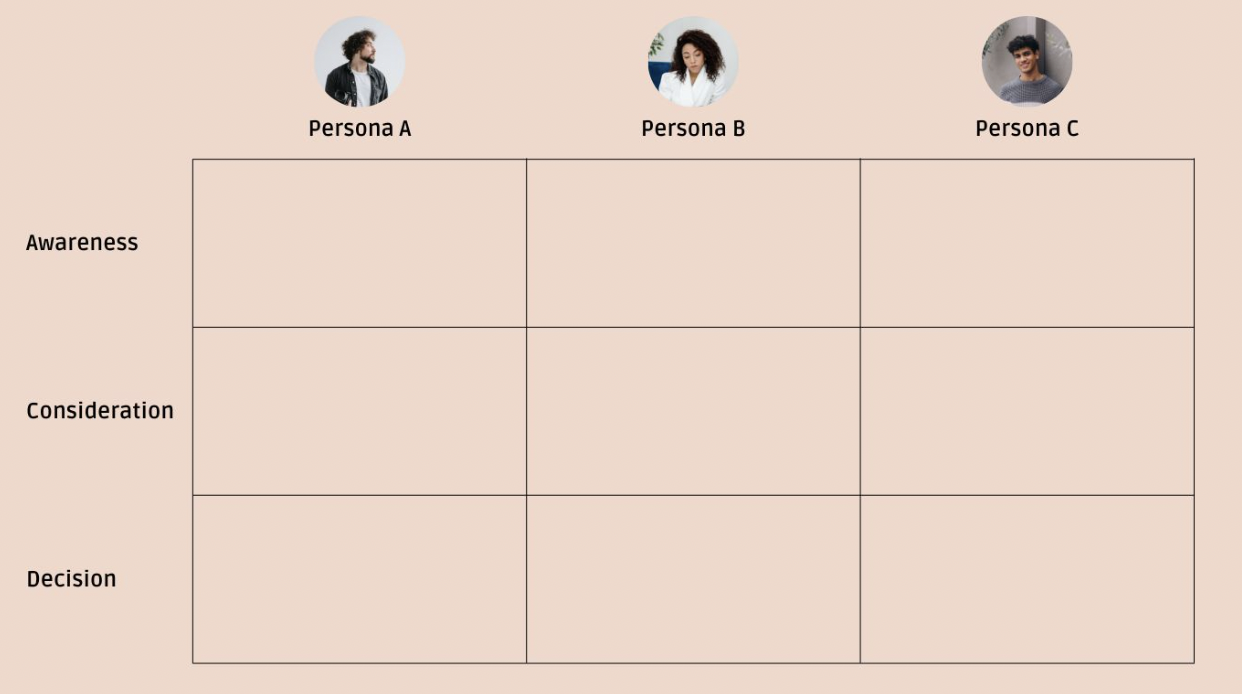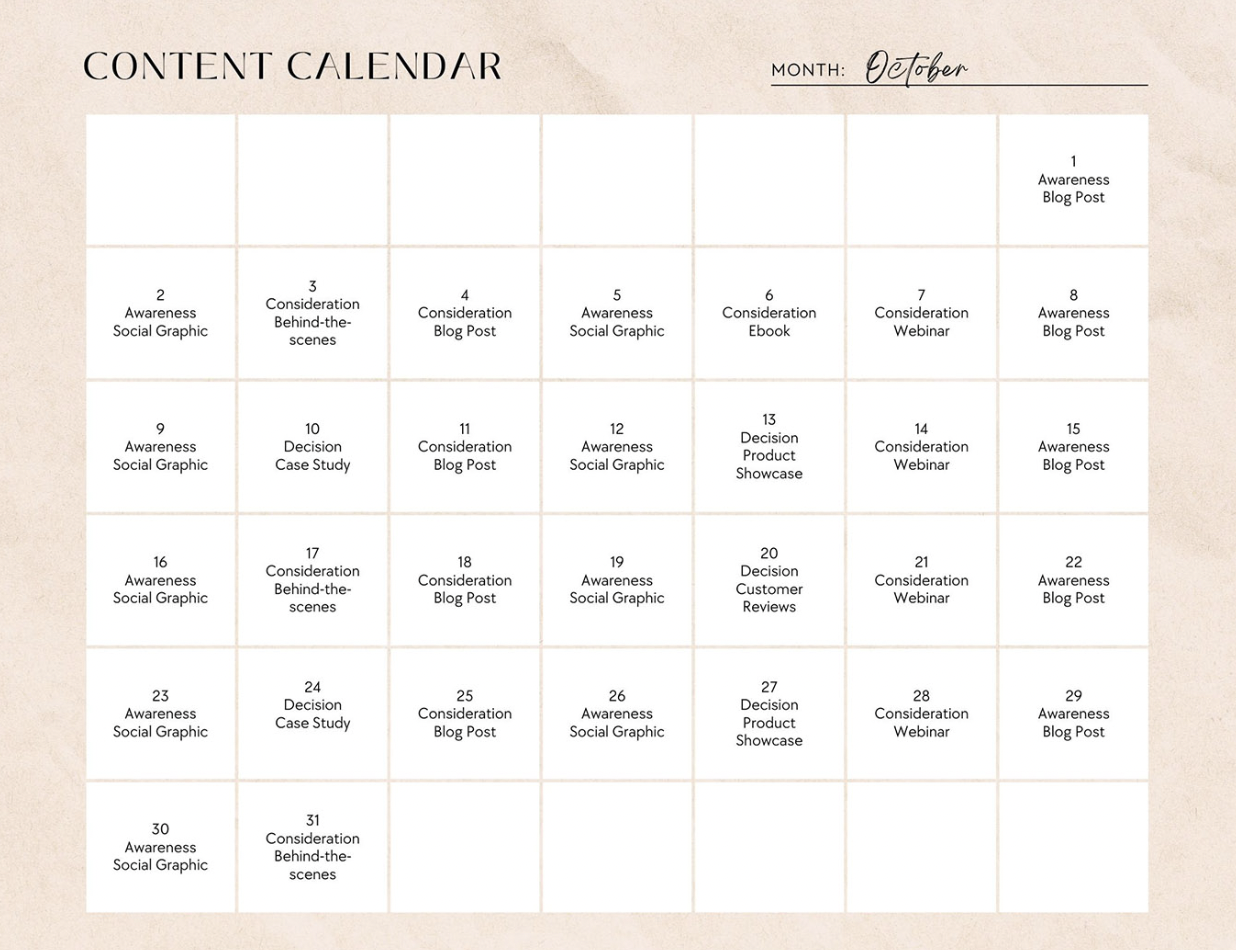How to Design a Content Map in 8 Steps

How to Design a Content Map in 8 Steps
Content mapping is a powerful way to improve your content marketing strategy. Learn how to visualize your current content library, identify gaps in your coverage, and better serve your audience in 8 simple steps.
Updated 11/15/2023
Content can help you attract website visitors, position your brand as an authority, convert leads into customers, and turn your existing customers into brand advocates. Whether you are an enterprise SAAS business or a solopreneur building a side project, content marketing remains an invaluable part of your marketing arsenal.
But as any seasoned marketer knows, producing quality content is only half the battle. The other half is determining what to write about and how to guide readers through the sales funnel. That's where a content map comes in.
This article will demonstrate the value of creating a content map, and show you how to make one for your website in 8 simple steps.
What is a Content Map?
A content map is a tool that is used to plan, organize, and structure the content on your website. Content maps are helpful for businesses of all sizes that want to educate potential customers and lead them through the buying process.
For this reason, content maps generally divide customers along two key axes: persona and stage in the funnel. The goal of a content mapping strategy is to develop content that addresses the unique needs and questions of each type of customer no matter where they are in the lifecycle.
Content mapping is the strategic process of planning and organizing content to align with the needs and interests of your target audience. Utilizing a content mapping template and tools can provide a structured approach to ensure that your content serves its purpose across various stages of the buyer's journey. An effective content map not only guides content creation but also helps in delivering the right message to the right audience at the right time.
Benefits of a Content Map
Content mapping enables you to visualize how your existing content serves your target audience. Each piece of content should serve at least one buyer persona at one stage in their journey. After taking inventory of your current catalog, you should be able to identify any gaps in your content strategy.
Content mapping also calls for analyzing where visitors engage most with your content. This review will surface common pain points, concerns, and questions among your potential customers. Not only does this information improve sales and customer understanding, but it also helps you produce more targeted and purposeful content.
A content map removes much of the guesswork around content marketing and orients your team around a shared vision. This alignment saves valuable time and resources because every project will have a simple goal in mind: fill a gap in your current map and help at least one demographic of website visitors move one step closer to becoming customers.
The process of designing a content map encourages you to summarize your content offering. Armed with a clearer view of your library, you can make more strategic decisions about what content needs to be created and how to categorize existing content. This ultimately improves efficiency and drives more online sales.
8 Steps to Design a Content Map
Creating a content map isn't nearly as difficult as it might look. Follow these simple steps to get one started:
- Set SMART goals
- Pinpoint you target audience
- List customer journey stages
- Build a content map
- Assign content to the grid
- Identify content gaps
- Develop an editorial content calendar
- Review and revise over time
Need help making your content map vision into a reality? Contact one of the top-rated content marketing agencies on The Manifest to move toward execution.
1) Set SMART Goals
Content maps are an effective way to reflect on your content marketing efforts and locate any gaps in your strategy. In order to get the most out of this exercise, begin by setting SMART goals.
SMART is an acronym for Specific, Measurable, Attainable, Relevant, and Time-Bound. By adhering to all five of these criteria, you can gauge the success of your content map and iterate as needed.

First, consider what specific outcome you want your content to achieve. Then, establish measurable benchmarks that will enable you to track progress over time. Make sure these milestones are attainable and relevant given your team's bandwidth and skill set. Finally, set a timeline for completing your content map so you can hold yourself accountable.
Here is an example of a SMART goal for a content map:
Within 3 months, our team will create 20 pieces of long-form content that will drive 10% more consultation signups on our website.
2) Pinpoint Target Audience(s)
A key aspect of content mapping is identifying your ideal customer and understanding their job title and role in decision-making. Mapping content to resonate with the target audience ensures that your messaging is relevant and resonates with the individuals with the authority to make purchasing decisions.
To develop content that actually motivates an action, you must have a clear understanding of who you are communicating with. Begin by brainstorming a list of all the different types of customers that interact with your business. These could be broken down by job function, company size, location, or any other relevant criteria.
Once you have these segments in mind, group them into categories based on their needs. Brainstorm what each customer archetype is looking to achieve and how your business can assist.
Each group should have distinct characteristics and a unique set of problems they are looking to solve. This will shape the type of content you produce, how you market it, and how you approach messaging.
3) List the Stages in the Customer Journey
Understanding the different stages of the buyer's journey is crucial for successful content mapping. From the awareness stage, where potential customers identify a problem, to the consideration stage, where they evaluate solutions, and finally, the decision stage, where they make a purchase, content must be tailored to address the specific needs and concerns of individuals at each stage of the funnel.
The traditional marketing funnel has three stages: top of the funnel (TOFU), middle of the funnel (MOFU), and bottom of the funnel (BOFU). These are often also referred to as awareness, consideration, and decision.
These stages are a great starting point for thinking about the kinds of content you will need to produce. However, they are not always linear and your customer might move back and forth between steps multiple times before converting.
Keeping this in mind, outline the typical customer journey from beginning to end. Consider how your sales process works and what content, education, or support is needed at each stage. Feel free to get as granular as needed to understand the customer's mindset at each point in the journey.
It is also perfectly acceptable to lay out multiple paths to conversion. Oftentimes, lower-end service offerings may only need TOFU and MOFU content while more expensive or personalized options will require a more comprehensive marketing strategy and touchpoints throughout the BOFU period.
4) Create your Content Map
Using the information from steps two and three, create a rectangular grid that will function as your content map. Your buyer personas will be laid out on the horizontal axis, and the customer journey stages will be listed on the vertical axis. This can easily be done in Google Docs, Microsoft Word, any charting software, and many CRMs.

The content segmentation grid provides space for you to list out both existing content and new ideas. Because every piece of content will have an assigned persona and stage in the funnel, you can tailor your messaging to maximize impact. Instead of writing blindly, your team will always know who they are writing for and what types of questions their readers are likely to have.
Creating relevant and diverse content is at the core of effective content mapping. From blog posts and social media updates to testimonials and product demos, each type of content serves a specific purpose in engaging potential customers throughout their buying journey. Repurposing existing content can also maximize its impact across various channels.
5) Assign Content to the Grid
With the wireframe of your content map complete, it is time to start filling in the blanks. Begin with any existing content you have and assign it to the appropriate spaces.
This includes the following and more:
- Blog posts
- Website pages
- Ebooks
- Infographics
- White papers
- Case studies
- Webinars
- Podcasts
For each piece of content, take note of the format, topic, length, and any other relevant details. This will give you a high-level overview of what ideas you have already covered. To get an even better picture of your content library, look at your customer engagement data to see which pieces are performing best.
Content with excellent session duration and scroll depth metrics can be considered your “pillars” and act as the foundation for your content strategy. And those with elevated bounce rates and low time on site may need to be reworked alongside your content gaps.
6) Identify Content Gaps
After completing step five, you should have a good sense of your content and where there may be opportunities. Content gaps are normal and to be expected, but they should be addressed in your strategy.
To do this, review your content map and note which spaces lack material. These represent your opportunities to produce new, targeted content to help move your buyers further down the funnel. For each persona, consider what types of questions they are likely to have at each stage of the journey and produce content that answers those questions.
You can also brainstorm content ideas using competitive analysis and direct audience surveys. Plus, SEO tools can assist with keyword research to locate high-value or low-competition opportunities.
Content mapping is intricately connected with digital marketing strategies and search engine optimization. Ensuring that your website content and landing pages are optimized for search engines enhances visibility. This, coupled with a strategic content plan, contributes to a cohesive digital marketing strategy that guides potential customers seamlessly through the buyer's journey.
By studying your niche, paying attention to how other websites approach similar topics and speaking with customers, you can develop many new ideas that will help flesh out your content map.
7) Develop an Editorial Content Calendar
Now that you recognize your most pressing content needs, develop a plan for producing and publishing that content. An editorial calendar will help keep your team organized and motivated and ensure a consistent flow of new material.

Start by designating which topics will be covered and when. Rather than jumping around the content map, it often makes sense to create content in a linear fashion. This will ensure that you can guide one segment of customers through the entire buying process before moving on. It also enables your marketing team to focus on one cohesive campaign at a time.
Whether you’re utilizing an internal writing team or hiring freelancers with AI writing capabilities, a content calendar will help your company maintain a consistent content theme across various groups.
8) Review and Revise Your Editorial Calendar
Your marketing strategy is never complete — the same goes for your content map. As your business grows and changes, your target audience will evolve along with it. But don't allow this dynamic to hinder your growth.
Set aside time on a regular cadence to review your progress. Look back at your SMART goals and compare your results to those original objectives. Keep a close eye on your key performance indicators throughout your timeline and after the deadline. If you fell short, take a moment to consider why.
Did you underproduce, or did your content underperform? Were your goals too ambitious, or did you encounter an obstacle you didn't anticipate? Did the needs of your audience change? Did any new opportunities recently arise?
Engaging potential customers through product demos and conducting market research can provide valuable insights for content mapping. Understanding the preferences and pain points of your audience allows you to create content that truly resonates, increasing the effectiveness of your content mapping efforts.
Digest these answers and then revise your content map to reflect your latest learnings. This may include removing outdated material, shifting priorities, or adding new topics to the mix. Once you have done so, set a new SMART goal and start the cycle anew!
Content Mapping Can Revolutionize a Content Strategy
Your content may be stellar on its own, but without a thoughtful approach, it'll fail to be comprehensive or cohesive in covering your desired topics over time. A content mapping approach will allow you to construct an editorial calendar to support your marketing goals.
Looking to take your content to the next level? Team up with an expert content marketing agency on The Manifest.